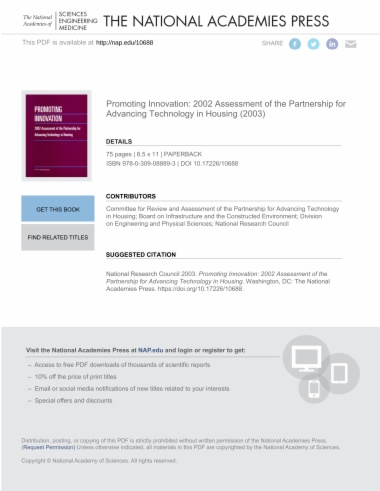

The application of technology to housing design, construction, and operation offers opportunities for improving affordability, energy efficiency, comfort, safety, and convenience for consumers. New technologies and production processes could help resolve serious problems facing housing producers, including labor shortages, interruptions due to inclement weather, quality control, and theft and vandalism losses. However, it is generally believed that realizing these benefits on a broad scale is considerably hindered by characteristics of the housing industry that inhibit the development and diffusion of innovations. The Partnership for Advancing Technology in Housing (PATH) supports activities to address issues that are perceived by the industry to be the primary causes of the problems, i.e., barriers to innovation, lack of accessible information, and insufficient research and development (R&D) (NAHBRC, 1998). PATH was initiated in 1998 when Congress appropriated funds for the U.S. Department of Housing and Urban Development (HUD) to begin implementing the concept, which was created by the National Science and Technology Council Construction and Building Subcommittee (NSTC C&B). At the request of HUD, the National Research Council (NRC) assembled a panel of experts as the Committee for Review and Assessment of the Partnership for Advancing Technology in Housing under the NRC Board on Infrastructure and the Constructed Environment. The committee was asked to assess how well PATH is achieving its many program objectives to expand the development and utilization of new technologies in the U.S. housing industry. The committee has approached evaluation of the program as an exercise that also provides direction for PATH's future improvement.